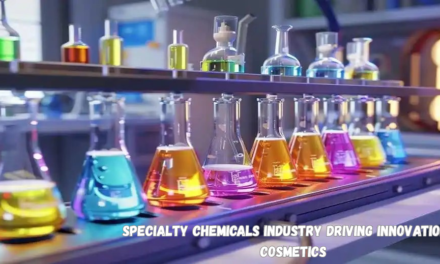Consumer chemical companies are increasingly focused on addressing the challenges of product packaging and waste reduction due to growing consumer demand for sustainability and environmental responsibility. Here are some of the key strategies they are adopting:
1. Use of Sustainable Packaging Materials
- Switching to Biodegradable or Compostable Materials: Many companies are replacing traditional plastic packaging with materials that break down more easily in the environment, such as biodegradable plastics (e.g., PLA, PHA), paper-based packaging, or plant-based materials.
- Recycled and Recyclable Packaging: Companies are using post-consumer recycled (PCR) plastics and other recyclable materials to reduce waste. This helps minimize the environmental impact of packaging and supports a circular economy.
- Minimalist Packaging: To reduce the amount of packaging waste, some companies are reducing the size and complexity of their packaging. For example, using fewer layers, eliminating excess plastic, and switching to more compact designs.
2. Refill and Reuse Systems
- Refill Stations: Companies are creating refillable packaging systems that allow consumers to reuse containers. Refill stations, where customers can purchase refills of products like detergents or cleaning solutions, are becoming more popular in certain retail locations.
- Reusable Containers: Some brands offer reusable packaging, such as glass bottles, which can be returned or refilled. This reduces the need for single-use plastic containers and promotes sustainability.
3. Improved Packaging Design for Recycling
- Easy-to-Recycle Packaging: Companies are designing packaging with recycling in mind by using single-material containers that are easier to sort and recycle. For example, using only one type of plastic or metal (such as PET or aluminum) to make recycling simpler.
- Clear Labeling for Recycling: To help consumers properly dispose of packaging, companies are including clear, easily understandable recycling symbols and instructions on packaging.
4. Reducing Single-Use Plastics
- Alternative Packaging Materials: Some companies are moving away from plastic by using alternatives like glass, metal, or cardboard for packaging. These materials often have a lower environmental impact when recycled.
- Phasing Out Unnecessary Plastic Components: For example, reducing or eliminating plastic shrink wraps, trays, or plastic film that cannot be recycled easily.
5. Innovative Packaging Technologies
- Edible Packaging: Some companies are exploring the use of edible packaging made from food-grade ingredients, which can reduce waste significantly by being consumed along with the product.
- Water-Soluble Packaging: Certain brands are experimenting with water-soluble packaging, which dissolves in water, reducing the need for disposal altogether.
- Smart Packaging: Companies are integrating smart technologies, such as packaging that changes color to indicate product freshness, or sensors that provide information on product quality, which can reduce waste caused by spoiled goods.
6. Extended Producer Responsibility (EPR) Programs
- Take-Back Programs: Some companies have implemented programs where they encourage consumers to return used packaging for recycling or refilling. These programs help reduce the amount of packaging that ends up in landfills.
- Collaboration with Recycling Programs: Companies are working with local governments, NGOs, and other industry leaders to improve recycling infrastructure and educate consumers about proper waste disposal practices.
7. Reducing Packaging in Transportation
- Efficient Packaging for Transportation: To reduce the carbon footprint associated with transporting products, companies are optimizing packaging sizes and materials to reduce space, weight, and environmental impact during shipping.
8. Sustainable Product Formulation and Concentrated Products
- Concentrated Products: Offering concentrated versions of products (e.g., cleaning agents, detergents, or beverages) reduces the need for large packaging. Consumers can dilute the product themselves, resulting in less packaging waste.
- Eco-friendly Chemical Formulations: Companies are focusing on making the products themselves more sustainable, such as using water-based formulas that reduce the need for heavy-duty packaging to contain potentially hazardous substances.
9. Carbon Neutral and Zero-Waste Packaging Initiatives
- Carbon-Neutral Packaging: Companies are offsetting their packaging emissions by investing in renewable energy projects or carbon offset programs. Some are aiming for “net-zero” emissions by balancing out the environmental impact of their packaging materials.
- Zero-Waste Manufacturing: Many chemical companies are adopting zero-waste practices in their production processes, ensuring that packaging waste is minimized or entirely eliminated by reusing or recycling materials within the supply chain.
10. Consumer Education and Engagement
- Raising Awareness: Companies are actively educating consumers on the importance of proper recycling and the environmental impact of waste. Through labeling, marketing campaigns, and social media, companies inform consumers about the recyclability of packaging and how to reduce waste.

















